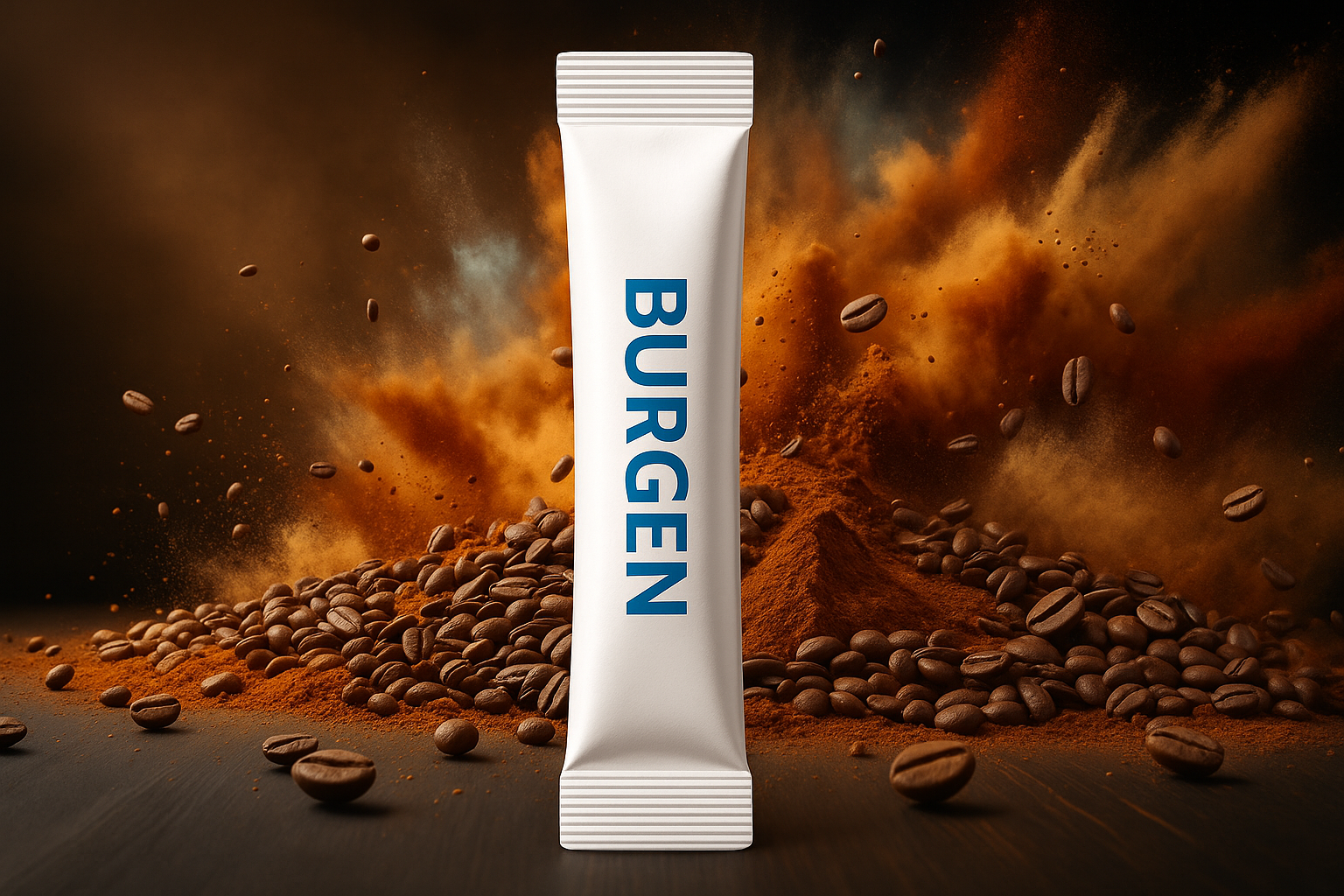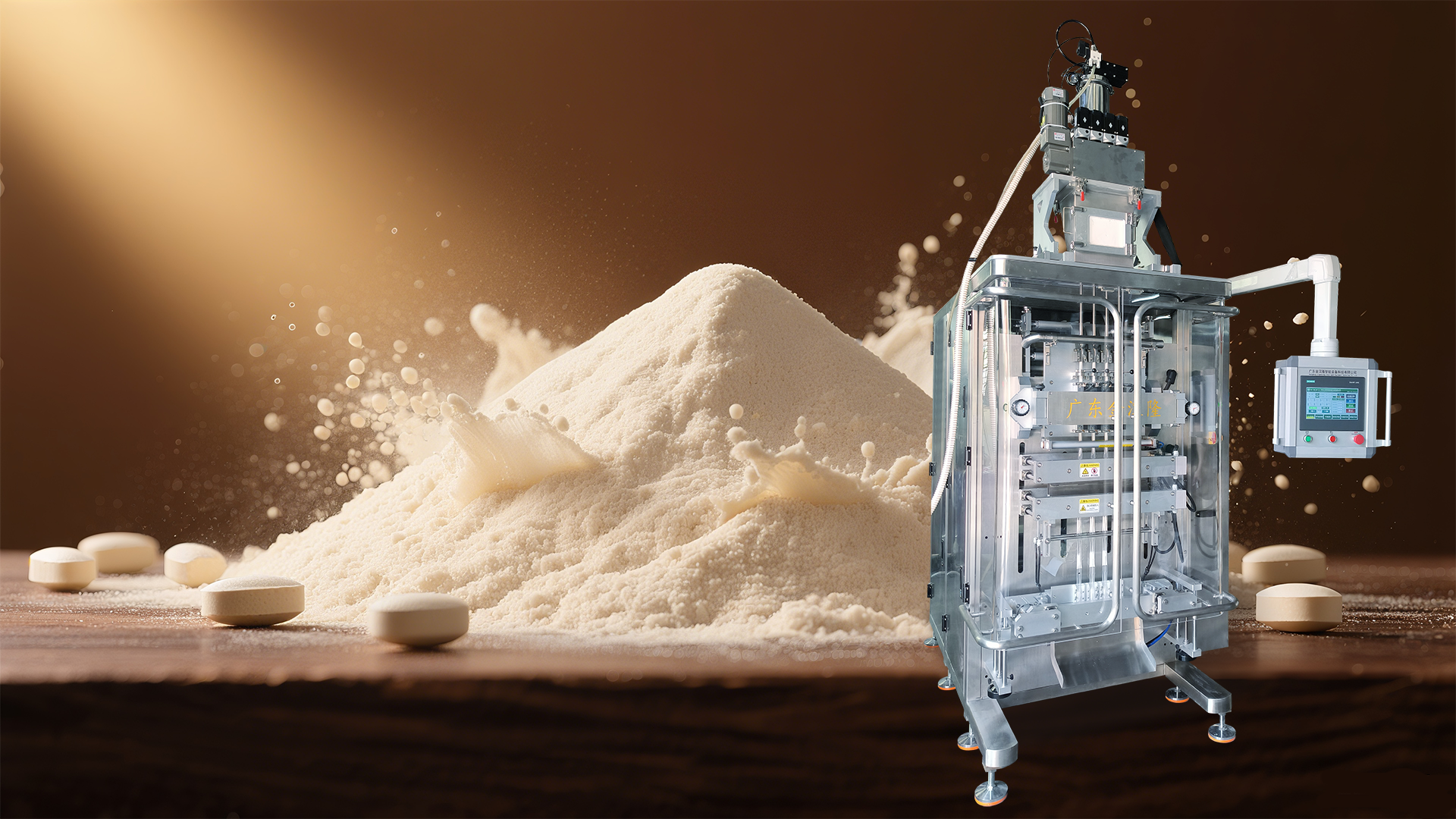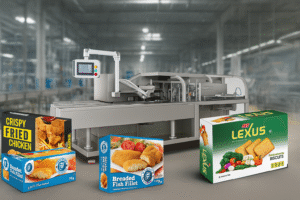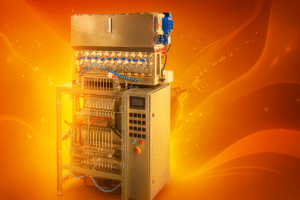What Is a Stick Pack Machine?
In fast-moving consumer goods and the nutraceutical/pharma space, a stick pack machine converts roll film into slim, single-serve packets for powders, granules, and certain liquids/gels. Commonly called a stick packaging machine (often multi-lane stick pack machine), it raises throughput, consistency, and compliance versus manual or semi-auto solutions. View solutions
Stick Pack vs Sachet: Which to Choose?


Why do brands love it? Compared with flat sachets, stick packs reduce film usage, look better on shelf, travel well, and make dose control straightforward. For nutrition and food brands, stick pack machines also simplify multilingual labeling and flavor variants, cutting SKU complexity while amplifying retail presence.
How Do Stick Pack Machines Work?
End-to-End Overview:
unwind roll → registration/printing → form the vertical tube → slit into narrow webs → form sticks → dose and fill → dust mitigation/extraction → cross/long seal → cut → discharge. The following sections expand each step so engineering and procurement can align quickly.
Film feed & tension control
film is drawn from the unwind stand and stabilized by web guiding and tension systems. A high-end stick packing machine keeps the web straight at speed (no edge “snaking”), which lowers scrap and protects sealing quality
Registration & slitting
after coding/printing, a photo-eye locks to eye marks; a slitter divides the main web into narrow lanes for multi-lane forming. Proper blade geometry and web paths determine lane width stability and downstream seal integrity.
Forming & sealing
each narrow web folds around a forming mandrel to create a tube, then receives the longitudinal seal (lap or fin). Next comes the cross seal. Temperature, pressure, and dwell time govern seal strength. For powders, evacuating air before sealing and using dust-control devices during dosing improves pack stiffness and case packing efficiency—this is the essence of stick pack filling.
Dosing & filling
augers serve powders; cup counters or multihead weighers handle granules; micro-dosed liquids may use piston or gear pumps. Hence the market terms stick pack filling machine and powder stick pack filling machine. The core is metering accuracy synchronized with film motion and line speed
Seal-cut & discharge
after filling, the machine makes the final cross seal and cuts to length, creating individual sticks. A robust stick pack packaging machine maintains uniform seals and clean edges at high lane counts. Optional metal detection, checkweighing, and reject stations protect compliance and brand reputation.
Stick Pack Machine Specifications: Key Parameters, Ranges & Selection Checklist
- lane count (2–20+)
Lane count drives footprint, complexity, and total output; more lanes amplify tolerances, dust control, and sealing uniformity challenges
- speed (commonly 60–120 packs/min per lane)
Published “up to” speeds assume ideal conditions; your true rate depends on fill time, seal dwell, print registration, and product flow
- dosing range and accuracy
1.Powders 0.5–20 g (±1% typical with auger); micro-doses may require servo augers or micro-augers.
2.Accuracy affects yield, regulatory claims, and cost per stick; matching the filler to particle size and flow is critical.
- film types and thickness
Typical options: PET/AL/PE, PET/PE, BOPE/PE; 50–120 μm total typical.
Why it matters: Heat-seal window, stiffness, and tear behavior determine seal strength, wrinkle control, and easy-open performance.
- tear notch/easy-open
Typical range:(Tear Notch / Easy-Open / Perforation / Chain Packs)
- print/coding position
TIJ/CIJ lot-date printing; optional TTO for variable data; photo-eye registration to pre-printed eye marks.
- edge trim collection
Clean trim control protects sealing jaws, reduces jams, and improves OEE; necessary for cleanrooms and high speeds.
- OEE, and changeover/cleaning time
Typical targets: OEE 70–85% for mature SKUs; higher with robust changeover and maintenance routines.
Why it matters: PLC/HMI features (recipes, alarms, audit trails) determine repeatability, training time, and validation effort.
How to use this checklist: place your target value beside each item, attach film specs and product COAs, and ask suppliers to confirm achievable sustained rates, tolerances, and utilities at those settings. For layouts, QA modules (metal detector, checkweigher, vision), and downstream cartoning integration, loop in engineering early to lock interfaces and controls.
See examples and data in Download specs & cases.
Materials & Sustainability for Stick Packs: Films, Recyclability & Seal Windows
common laminates include PET/AL/PE or BOPE/PE. If recyclability is a priority, single-material structures can be used with tuned heat-seal curves and enhanced cooling (water or air), forming a recyclable stick pack machine approach where materials and process are co-engineered.
Applications & Industries: Where Stick Packs Win
nutraceutical powders, instant coffee, sugar/salt seasonings, oral hydration and electrolytes, probiotics, and energy gels are classic fits.
In e-vapor accessories, cartomizer stick pack packaging machines can standardize accessory kits or consumable refills in regulated fulfillment flows
Pharma-Grade Stick Pack Packaging Machines: Cleanability, Traceability & CSV
pharmaceutical stick pack packaging machines must consider cleanability, traceability (batch/ESig), audit trails, and validation documentation, with stainless product-contact parts. When dealing with Rx-grade or sensitive nutrition products, choose vendors with 21 CFR Part 11/GMP mindsets for stick packaging machines. See Pharma solutions
Buying checklist (practical)
product form/particle size/flow; target throughput and lane scalability; film structure and print method; metering accuracy and cleaning validation; tear notch/hang-hole/chain packs/contract-pack needs; integration with metal detection, checkweighing, cartoning, and case packing; spare parts and remote support; CSV/URS/FAT/SAT documentation across the project.
Line integration
upstream, pair with screw or vacuum loaders; downstream, connect cartoners, case packers, and palletizers. With cartoning in line, you can produce trial or sample boxes directly, reducing WIP touches and boosting OEE. For layouts and controls discussions, talk to an engineer.
Final take
if you’re evaluating stick pack machines, this guide blends definition, end-to-end mechanics, specs, and a practical checklist to speed your decision. For powders, granules, or liquids, we can tailor solutions around a stick pack packaging machine, stick packing machine, stick packaging machines, a stick pack filling machine, recyclable stick pack machine, or pharmaceutical stick pack packaging machines to deliver higher output with assured compliance for your market





2 Comments
Exactly the information I was looking for.
Thanks, Jane! 🙌 We’re glad the guide was exactly what you needed. If you’re comparing stick pack machines, share your product, stick size, target speed, and film type—I can suggest options and a quick checklist.